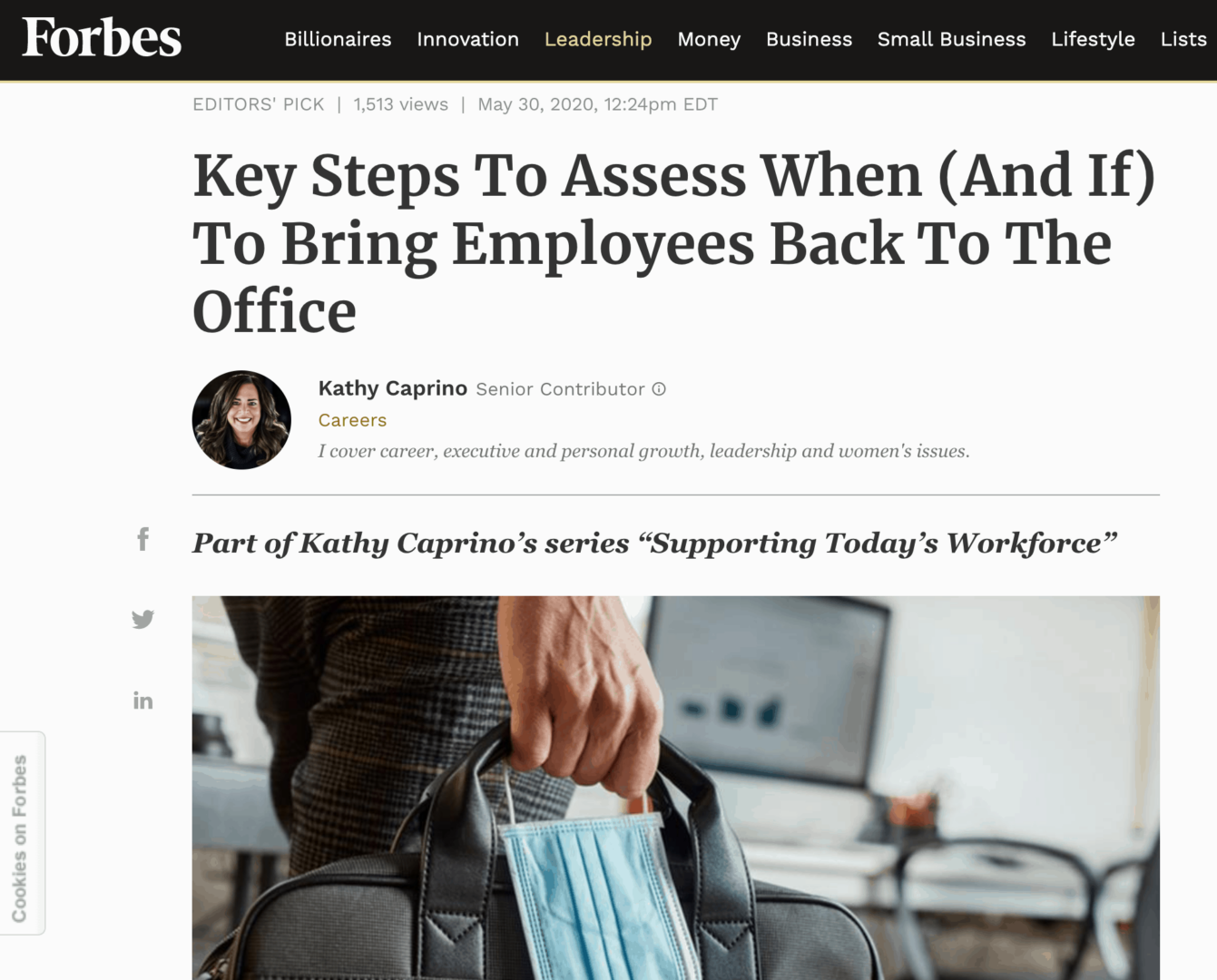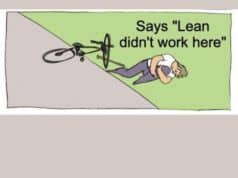I was asked by a writer for Forbes.com to share some thoughts on re-opening workplaces safely (or as safely as reasonably possible).
Here is that piece:
Key Steps To Assess When (And If) To Bring Employees Back To The Office

I tried to draw on Lean principles and methods, as well as Lean Startup thinking in my comments.
I also utilized thoughts from the executive team at KaiNexus as they talk through these issues.
How do we think about the productivity of employees and leaders who are working from home right now? How do we engage them in conversations about coming back to offices or other workplaces?
How do things different in healthcare settings?
One snippet:
“At KaiNexus, a Texas-based software company, the executive team agrees that the company has been 90 to 95% effective when working from home these past two months, compared to the old normal of most everybody working in the office. Customers are still being taken care of, and new sales and renewals continue to come in. Measures are important, but gut feel and qualitative feedback from employees and leaders matters a great deal as well. Not everything that matters can be measured quantitatively.”
I hope you'll check out the piece.
What thoughts do you have about re-opening workplaces? What is your organization talking about? Leave a comment below…
After the interview, the CDC issued some new guidelines about re-opening office workplaces, as well.
Some of that guidance is based on the more recent understanding that the coronavirus is more often spreading through direct person-to-person contact than it is through picking up the virus from surfaces. See what the CDC has said about that.
As a reminder, I'm also doing a webinar on this topic for Entrepreneur magazine on Wednesday:
Please scroll down (or click) to post a comment. Connect with me on LinkedIn.
Let’s build a culture of continuous improvement and psychological safety—together. If you're a leader aiming for lasting change (not just more projects), I help organizations:
- Engage people at all levels in sustainable improvement
- Shift from fear of mistakes to learning from them
- Apply Lean thinking in practical, people-centered ways
Interested in coaching or a keynote talk? Let’s talk.
Join me for a Lean Healthcare Accelerator Trip to Japan! Learn More










Hi Mark,
Thanks for your wise words.
I work for a construction company in New Zealand. We have had a government imposed Covid level system which started with a full lockdown, level 4, where most everyone in the country was working from home, not working, or doing essential work (supermarkets, gas stations, Police etc). We only had a few staff in our company working on that essential work, a sewer issue that needed fixing for a council.
Our business worked back up to about 90% when the country went to level 3. Office folks continued to work from home but crews started up again on site. They were required to follow strict protocols in distancing, tracking, and cleaning. These protocols have come from national and international industry bodies and government departments involved in construction industries.The main reduction in productivity of this level seems to have been the actual preparation of the sites for the teams to re start their projects. It seems that, in the main, the protocols have been able to be complied with without reducing productivity by much. The challenge is for leaders to make sure that the teams are complying with distancing.
New Zealand has been in Covid Level 2 for some weeks now and this has not changed our business behaviour much except for more office staff returning to the office, and more interaction between sites. There have been major changes for the country as restaurants and bars have reopened and things are returning to sort of normal at this level.
The next step is level one when where apart from the border closure, things will be pretty much back to normal. I assume the distancing, and other requirements will reduce then. Challenges will exist in the international supply chain.
One challenge we have had is that we had to get specialist crew from Germany when we installed a proprietary sewer liner. Getting them over the border was a challenge given that only NZ citizens are allowed in right now.
Hi Mark-
Even though this post is from May this issue is still very relevant. We are seeing many places shut down again and they are going to need to rethink their opening plans to prevent shutting down again and again. Many companies are holding out till 2021 to bring employees back in the workplace, and some are considering never bringing back their employees back in the office. I am not sure if we will ever be able to fully bring everyone back full time, I see many companies having their workers come in 60% of the time and work from home 40% of the time, or even 70/30, or 80/20. I am currently working remotely for my internship, and I find it very difficult to be productive at home personally, but I’ve also seen many people get more work done being home. Many places are able to bring their people back, but big corporations and companies will not, and working from home will be the new normal. This topic is not going to go away! Great article!
Thanks, Abigail. I think that, since May, we’ve learned that transmission through surfaces is less of a risk, and that aerosols or droplets hanging in the air might be more of a risk. I’d personally be less concerned about cleaning everything constantly, especially if I’m wearing a mask and washing my hands a lot. Six feet isn’t a magical distance that stops the virus… so I would adjust my approach accordingly if I were going back into an office.